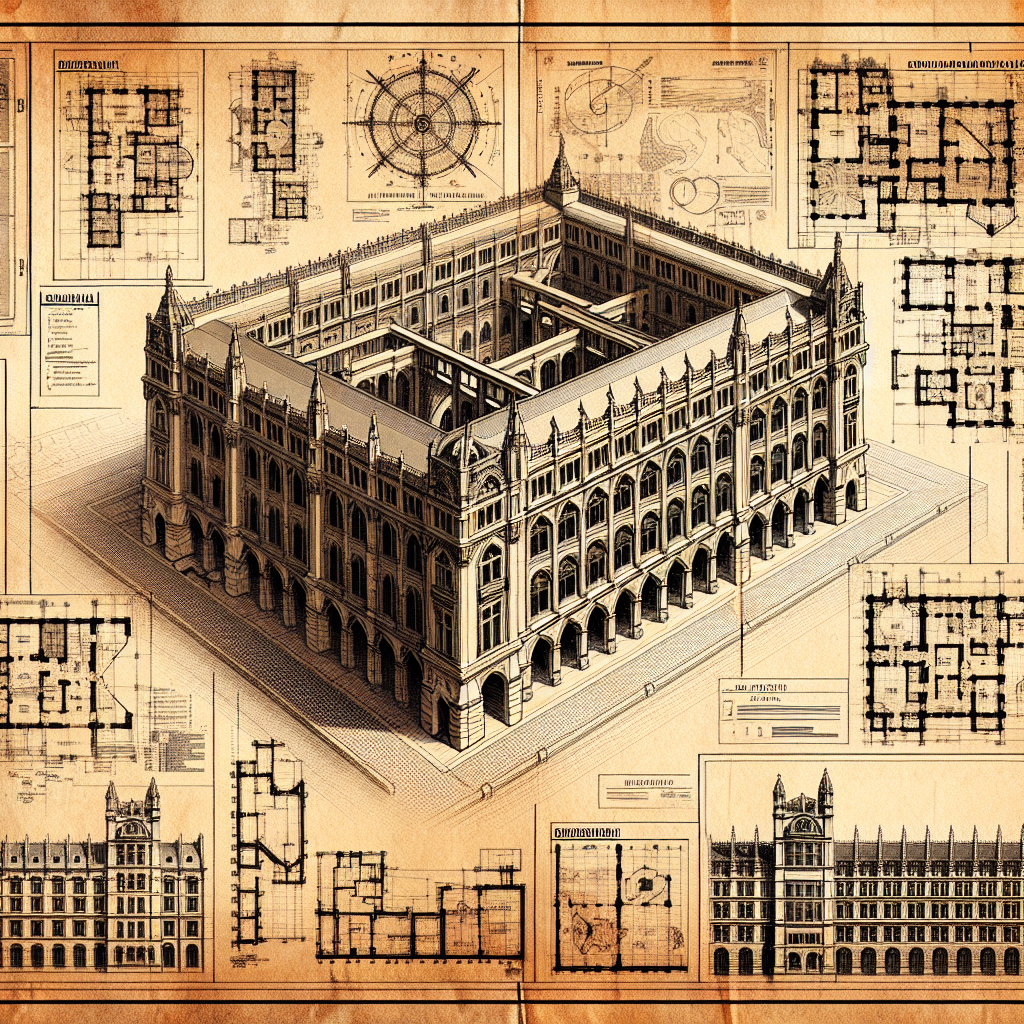Imagine, if you will, a vibrant landscape of suburban London at the turn of the 20th century—a time when Victorian architecture was giving way to the Edwardian building boom, and the skyline began to redefine itself with unique styles and structures. In the midst of this exciting transformation, one name shines brightly: Nowell Parr, an English architect whose works have forever altered the suburban vistas of London. Born Clement William Nowell Parr in 1864, this brilliant architect played a pivotal role in shaping the architectural direction of places like Brentford, Ealing, and Acton, thriving between the late 19th and early 20th centuries. His designs were not only architecturally significant but also captured the spirit of a burgeoning suburban identity.
A Journey Through Time: Nowell Parr’s Early Life and Career
To truly appreciate Nowell Parr's work, let’s first take a journey into his past. Born into a period of industrial and urban evolution, Parr's early career was marked by traditional architectural training. During this time, architecture was not just a profession; it was a calling to influence society's structures. Parr found his early opportunities largely in the public sector, creating plans and designs that spoke of robust, functional, and aesthetically pleasing structures.
What makes Parr’s work truly fascinating is how he captured the heart of suburban England. The suburbs were not merely residential offshoots of the bustling city but were becoming cultural landscapes in their own right. Parr’s architectural contributions helped shape this identity, making places like Brentford and Ealing the charming localities they are known for today. His works include a variety of buildings from public houses to fire stations, each marked by distinctive design features and a staunch commitment to quality.
Architectural Masterpieces: Nowell Parr’s Signature Projects
So, what exactly did Parr bring to the table? Let’s explore a few of his renowned projects that exemplify his innovative approach and profound understanding of urban development.
One stand-out project is the Southall Fire Station. Built-in 1899, the fire station remains an icon of functional Wealden design. This station wasn’t only about utility; it has harmonious arches and robust facades that symbolize strength and reliability, qualities essential to community services.
Another testament to Parr’s craft is the famed public houses. Nowell Parr had a flair for designing pubs, an integral part of British social life. His creations like the Royal Oak, now a Grade II listed building, featured Arts and Crafts motifs, integrating local craftsmanship with architectural ingenuity.
A Scientific Approach: Arts and Crafts Influence
Analyzing Parr’s work through a scientific lens unveils a deep connection with the Arts and Crafts movement. This design philosophy celebrated traditional craftsmanship using simple forms and often applied medieval, romantic, or folk styles of decoration.
Parr expertly integrated these ideals into his architectural projects, fostering a fusion of beauty, function, and craftsmanship that remains admired to this day. His scientific approach involved meticulous planning and innovative use of materials that ensured both durability and aesthetic appeal. One could indeed say he was ahead of his time, intertwining ecological sensitivity with the practical needs of housing and public buildings.
Why Nowell Parr Matters Today
The optimism embedded in Parr’s designs is not just locked in the past; it resonates with our modern urban society. His focus on combining beauty with utility continues to inspire architects around the globe. Moreover, the consideration and foresight seen in his work provide valuable lessons in sustainable urban development.
In modern terms, Nowell Parr’s legacy is a piece of living history. His buildings not only stood the test of time physically but also serve as historical markers in understanding the architectural evolution of suburban Britain. Parr captured more than the essence of an era; he encapsulated an attitude of progress that remains relevant in our age of rapid urban expansion.
The Optimism of Architecture
Embodying both scientific precision and sheer artistic optimism, Parr’s work shows us that architecture isn't merely about constructing buildings—it's also about constructing futures. It reminds us today of the importance of aesthetic consideration in urban design, a blend of old wisdom and new science leading to innovative yet timeless creations.
Let Parr’s work be a call to action for today’s architects and urban planners. As humanity continues to grow and expand its reaches into new regions, the same creativity, and spirit that Parr applied over a century ago must guide our endeavors. In understanding and learning from the past, we have the opportunity to chart a sustainable and beautiful future for all.
Through remembering Nowell Parr, we celebrate not only an architect but an inspirational human story of innovation and optimism. His architectural compass led to the creation of spaces where people live fulfilling lives—environments that support communities, inspire local pride, and remind us of the harmonious possibilities between humanity and its edifices.

